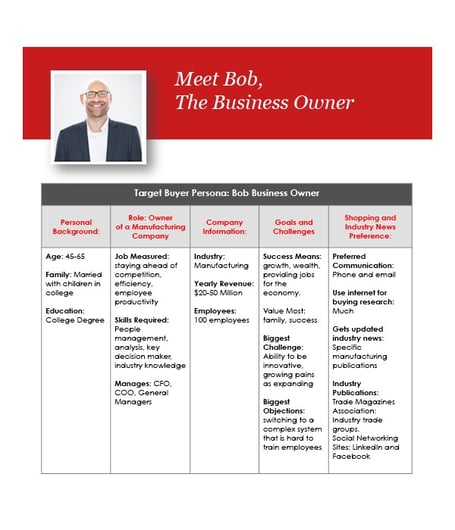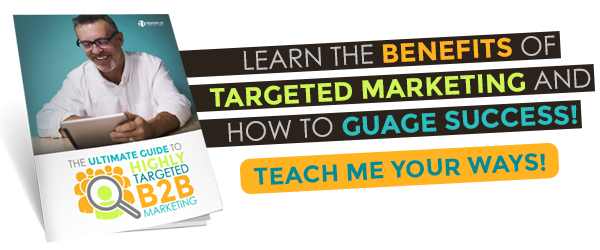Recently, the Content Marketing Institute released its 2015 B2B Manufacturing Content Marketing Report. The Institute discovered that businesses are developing new, sales-focused marketing approaches – but need to find innovative ways of attaining their goals!
Manufacturing: From Sales to a Marketing Focus
Manufacturing enterprises have traditionally emphasized sales as their revenue driver. With more industry competition than ever, marketing is growing in importance – and the manufacturing sector as a whole has been slow to adapt.
Key manufacturing trends point to the emergence of marketing:
- SMAC Adoption – Social, Mobile, Analytics, and Cloud
- Growing Rates of Capital Investment
- The Internet of Things
- Next-Shoring
What ties all these forces together? The emergence of new, more effective ways to connect with customers and build sustainable relationships to grow profit.
The way to prove and accelerate your brand's thought leadership is inbound marketing. Blogs, e-books, case studies, and visual content like infographics and videos work together with social media to enhance the reach and resonance of your brand’s voice.
Most manufacturers lack structured processes for developing content, so it’s important to use an approach that focuses on your strengths and multiplies ROI from your efforts. You should build content around a key asset: Your knowledge about your customers.
For Content that Matters, Start With Your Buyers
You already have a clear idea who your ideal customer is – but do you have buyer personas?
Buyer personas synthesize your knowledge about prospective customers into actionable data that improves ROI from your sales and marketing. That involves evaluating what you know about your ideal customer in a structured way.
Let’s see an example of a manufacturing buying persona:
Persona: Bob Business Owner: The persona “name” is a shorthand you’ll use to refer to it later.
Roles: Company Owner, Negotiator, Family Man, Community Leader: What roles does the buyer play – at work and at home? While work roles help you determine a buyer has the need and ability to make a purchase, non-work roles help illuminate the emotions, interests, and concerns that can tip the balance.
Goals: Company Growth: What is your buyer’s main business goal? How does your product or service relate to it?
Challenges: Inefficiency, Limited Staff, Limited Budget: Each buyer has 1-3 pressing business challenges to face. How will your offerings help?
Age: 45-65: Age can influence the content a buyer prefers and the distribution platforms he or she trusts.
Income: $20k-$50k: Both personal income and business income provide insights into effective marketing tactics.
Education: College Degree: Level of education influences communication patterns and brand expectations.
Location: Suburban: State, region, and the place a buyer calls “home” all impact buying behavior.
Story: The “story” is a bird’s-eye overview synthesizing the factors. For example: “Bob needs a vendor with a turnkey solution. He will need financing and is experiencing growing pains. He's a hands-on leader who values real-world experience and partnerships. Bob and his wife are putting two kids through college.”
You can further refine your personas by conducting surveys or interviewing customers. The key is this: Your marketing must be built around how your prospects make decisions, not how you’d prefer to sell to them!
Building a Content Marketing Strategy on Your Buyer Personas
Once you have a persona, you can build content to match it at every step in the sales funnel. When planning content, always put the customer first.
Let’s look at how your persona relates to the stages of the buyer journey:
Awareness
The buyer has a nebulous problem, but is unaware of your brand or how you can help. Blogging in your area of expertise helps, but a detailed e-book is often what gets prospects to trade you their email address. What free e-book does Bob need? “Keys to Efficiency for a Small Team.” Remember keep an awareness stage offer purely educational, no sales tactics!
Consideration
Your buyer has a clear problem. He knows your reputation and specialties, but is considering competitors. Now, it’s time to position a specific solution to your the problem through landing pages, email marketing, and premium content. For Bob, this might be an email sequence, sent one message per day: “Five Days to Higher Productivity With No Hiring.” Always keep a consideration stage offer educational but dial into specific questions you commonly get about your product/service and write a clear sloution for the problem.
Decision
Your buyer has evaluated solutions and has a short list of vendors. He will contact them one by one; the process ends with a buy. Since your reputation and value are clear by now, premium content is the focus. What will make Bob’s day? A case study: “How XYZ Manufacturing Grew Efficiency 20% in a Week With No Hiring.” Case studies and other decision stage offers are a great way to help your prospects understand your specialty.
The Content Marketing Institute reported 80% of decision-makers want their product information from articles, not ads. Content helps you educate your customers before they ever make contact with you, so you should provide plenty of timely, relevant, informative content. That's "strong content"—the kind that answers prospects' questions and helps them solve problems. Consistently providing strong content is the key to cutting through the clutter online.
Related Blog Posts:
- B2B Brands Blast Off With YouTube: Tips For Manufacturing Marketing Using Video
- Intelligent Marketing Grows Your Business
- How Can Buyer Personas Improve My Business?
Learn more about marketing your home builder company with the free eBook below.






